AirPods 4 are the best pound-for-pound product in Apple’s portfolio. These open-ear buds sound good and pack tremendous tech and software features into a ridiculously diminutive package. But it’s more than just that; AirPods are also a resilient piece of tech and stand up well under the rigors of day-to-day usage. Watch our hands-on AirPods 4 review as we discuss its top features, settings, and more.
Apple sells two versions of the AirPods 4. The base version costs $129 and is excellent for those who want the best wireless headphone experience for Apple devices but don’t want to pay a premium for noise control features.
The upgraded version, AirPods 4 with Active Noise Cancellation, costs $179. In addition to the added noise control capabilities, that extra $50 gives you a wireless charging case with a built-in speaker for Find My alerts.
Watch: AirPods 4 top features and review
Sponsor: ESR makes the best AirPods 4 cases with MagSafe compatibility!
ESR Cyber FlickLock™ Case | ESR Orbit Hybrid Case
Subscribe to 9to5Mac on YouTube for more videos
Why choose AirPods 4 over AirPods Pro 2?
AirPods 4 is more or less a slightly paired down, open-ear version of AirPods Pro 2, which features a closed-ear design that uses silicone ear tips that mold to your ear to create a sonic seal. Closed-ear buds are great for improving low-end frequency and enhancing noise-cancellation properties, but the silicone tips have been known to cause comfort issues for some users.
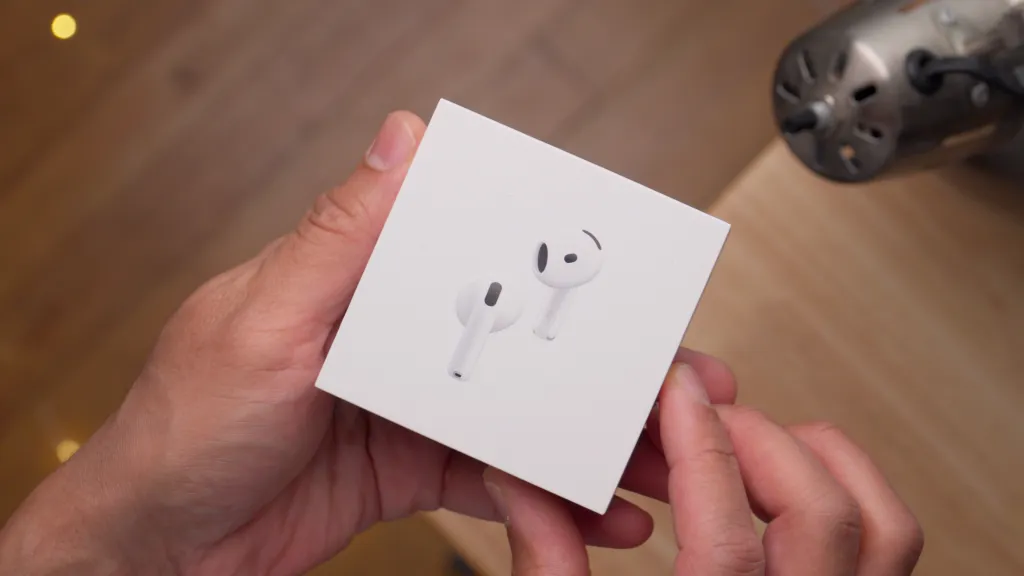
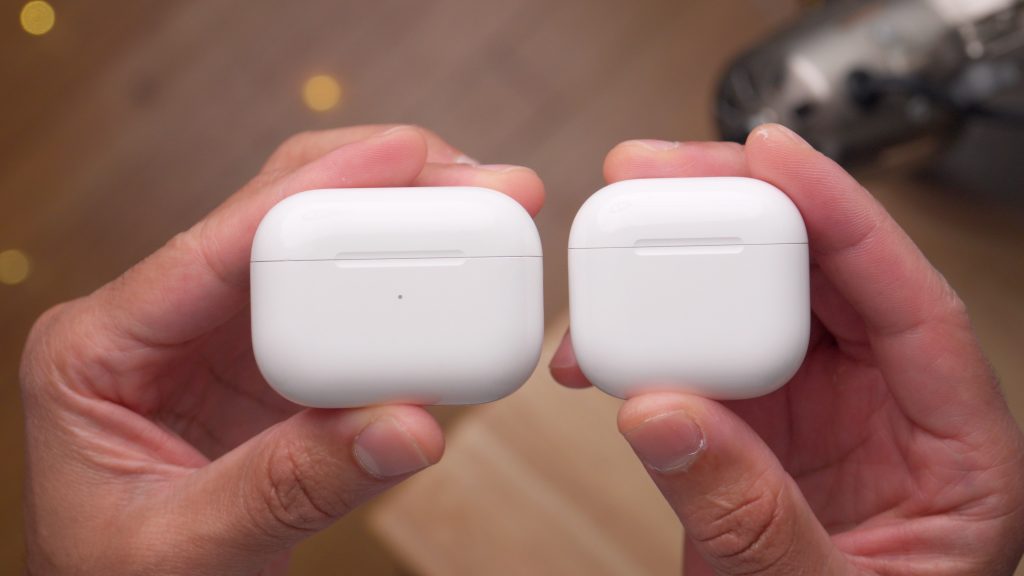
I know several people who cannot use the AirPods Pro 2 without getting a headache due to the pressure put on their ears, and that’s the primary reason one would choose AirPods 4 over AirPods Pro 2.
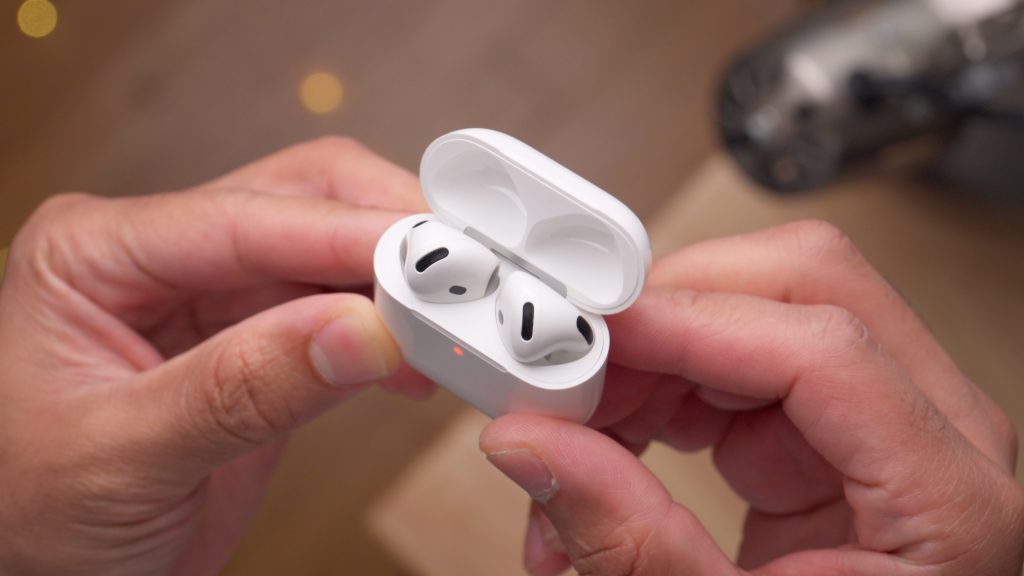
The second reason for choosing AirPods 4 is the cost. If you’re looking for the cheapest wireless buds that Apple sells, then the $129 entry-level version is available. However, consider forking over the additional $50 required to purchase the AirPods 4 with ANC. That still makes them $70 cheaper than AirPods Pro 2, though you’ll often find Apple’s flagship wireless buds on sale for just $199. It’s likely that we’ll see AirPods 4 go on sale in the future as well.
They just work.
As Apple’s product lineup has grown more complex, it’s easy to make fun of the company’s unofficial “it just works” slogan, which Steve Jobs liked to sling around in Apple keynotes of yesteryear. However, unlike some products in Apple’s portfolio, AirPods generally live up to that tagline, and the 4th-generation version is no exception.
It begins with the dead-simple pairing process: place your AirPods 4 Charging Case next to your iOS device, open it, and tap Connect. That’s it.
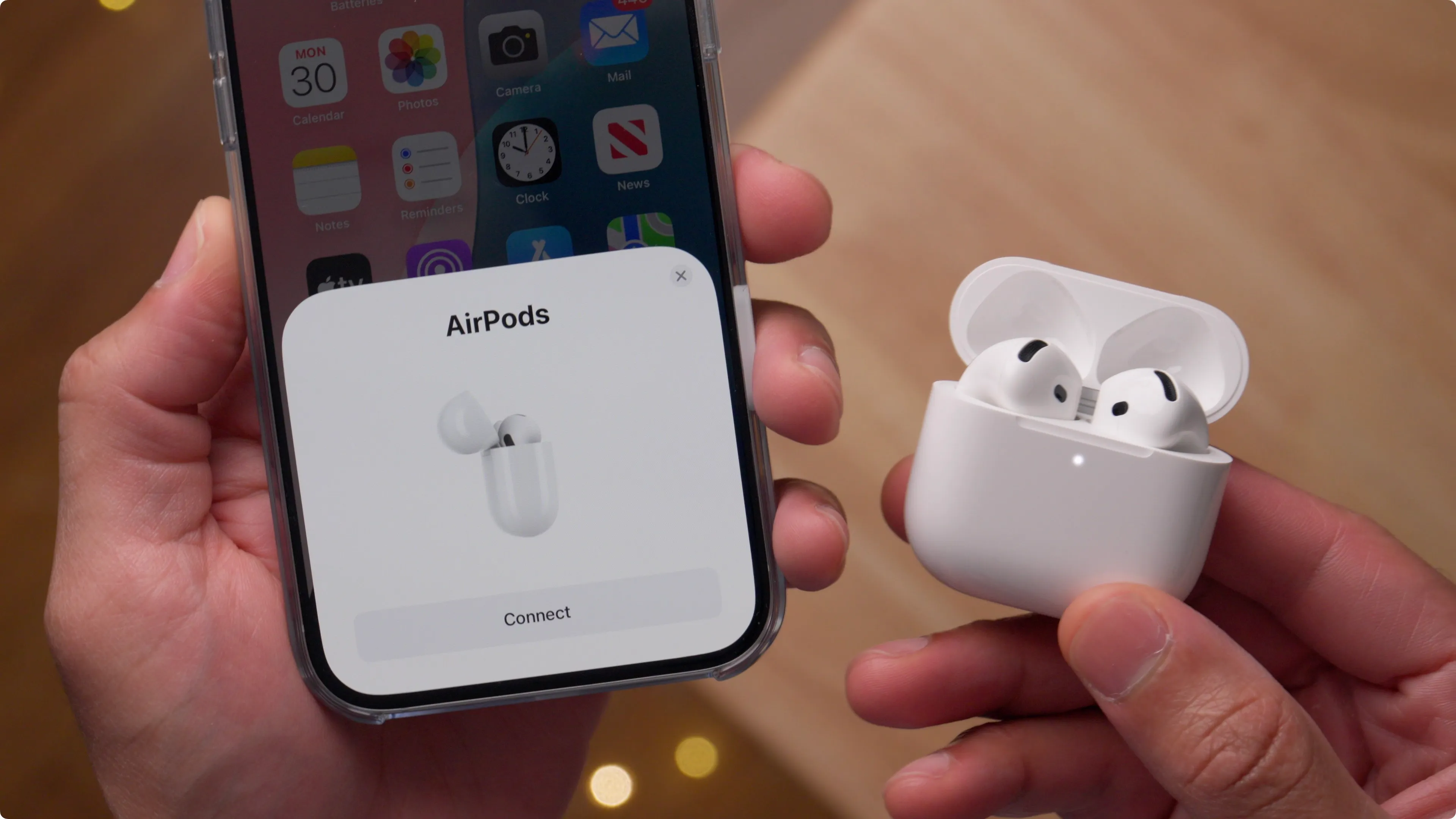
Even better, once your AirPods 4 are paired, they are automatically linked to all your Apple devices if you’re logged in to the same Apple ID and have enabled two-factor authentication. This lets you enjoy AirPods 4 on your other Apple devices without re-performing the pairing process.
On previous versions of the AirPods, you’ll notice a setup button on the rear of the case for pairing with non-Apple devices. AirPods 4 is the first version to omit the setup button and instead relies on a simple double-tap gesture on the front of the case while the lid is open to initiate manual pairing.

In addition to having your AirPods available for every device linked to your Apple ID, they seamlessly switch between each device as you start using it. For example, suppose I’m listening to Apple Music on my iPad Pro, then I pick up my iPhone and start playing music. AirPods 4 will automatically switch the playback source to the iPhone and notify you on the original device that the source was changed. This isn’t a new feature for AirPods 4, but if you’re not careful, you’ll start forgetting that headphones never used to work this way in the past. It’s ridiculously convenient.
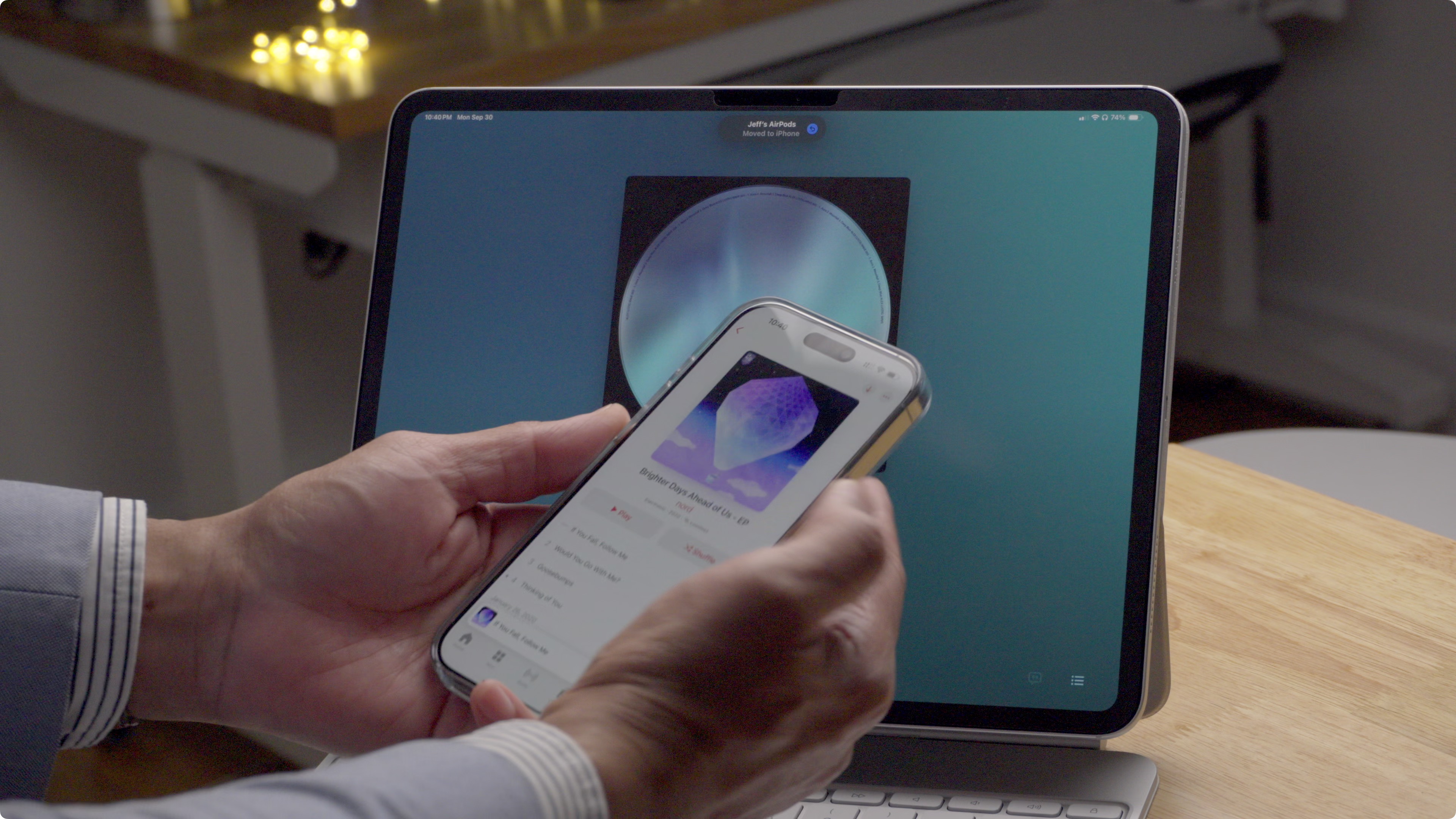
AirPods 4 also plays nice with Apple Vision Pro, thanks to the H2 chip, which yields ultra-low latency audio playback. However, the more impressive entertainment integration is with Apple TV, which lets you easily switch to AirPods when you want to watch a movie on the big screen without disturbing others.


Comfort and Fit
AirPods 4 have been designed to accommodate more ear types, which is excellent for those who don’t like the feeling of the in-ear tips used with the AirPods Pro 2. Using techniques involving laser topography and 3D photogrammetry, Apple has mapped out thousands of ear types and generated 50 million data points to make a one-size-fits-all device. It’s a valiant effort, but Earth has roughly eight billion pairs of human ears, so comfort and fit may vary.
Compared to the AirPods 3, the AirPods 4 seem to fit slightly better in my ears and do a better job of staying put. After a week of testing, I think AirPods 4 is the most comfortable iteration, but it falls just short of the fit and stability provided by the squishy silicon ear tips of AirPods Pro 2.
Control
There are several ways to control the AirPods 4:
- Automatic ear detection
- Stem force sensor
- Siri
- Siri Interactions
Automatic ear detection pauses playback when AirPods 4 are removed from your ears. Music playback will resume automatically if you place them back in your ears within 15 seconds.
You can also control AirPods 4 via the force sensor on its smaller, redesigned stem. A single press will pause or play music, while a double or triple press will skip forward or backward.
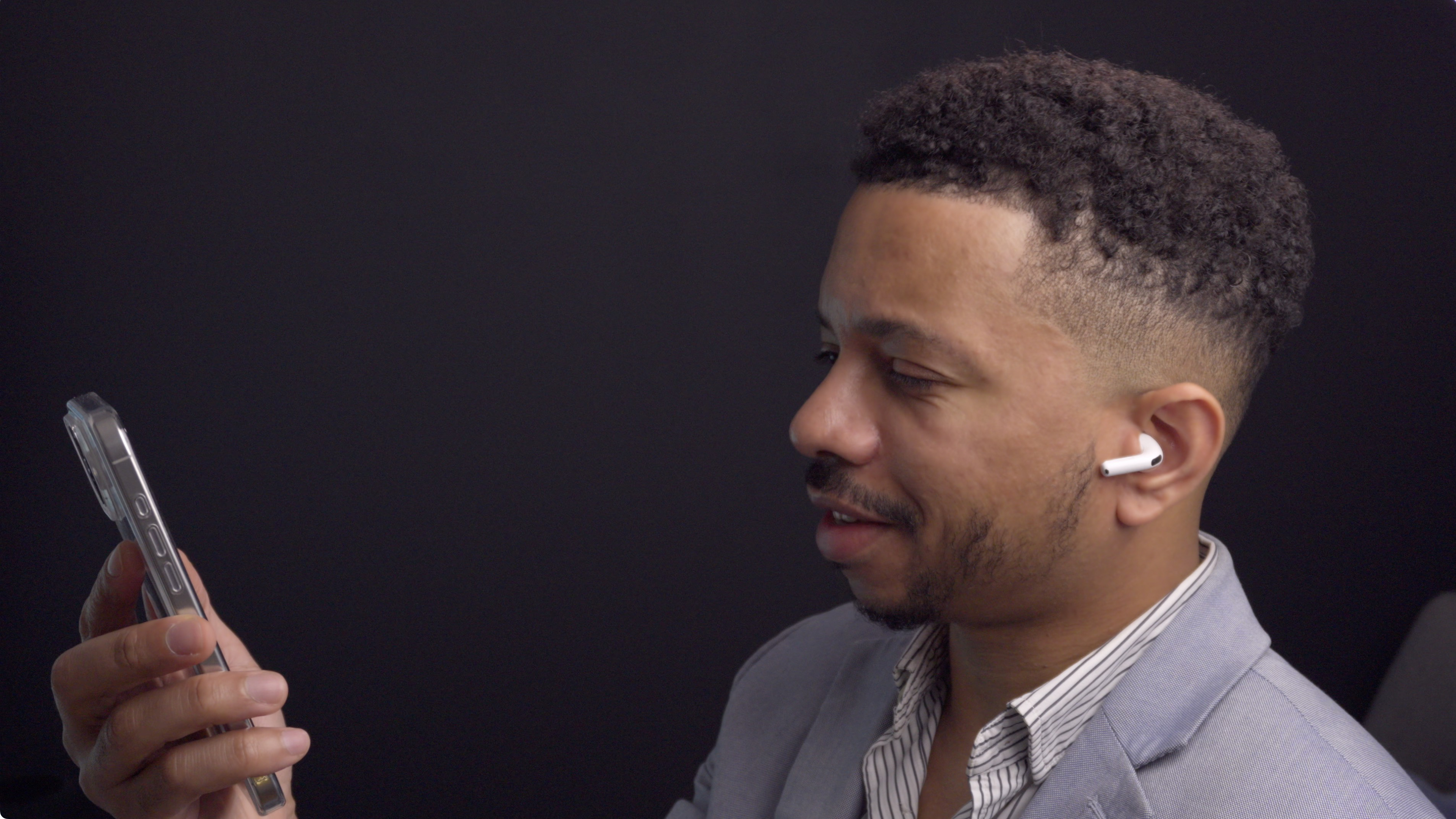
Long-pressing the stem’s force sensor cycles between the various noise control modes you have enabled within the AirPods’ settings. You may also reconfigure the force sensors of either earbud separately, adjusting the available noise control modes or even configuring the stem to invoke Siri instead.
When an incoming call arrives, force-pressing either stem once answers the call. While on the call, you can configure the stem to toggle mute or end the call via a single or double-press.
Of course, you can also control your AirPods using Siri. Accessing Siri via AirPods 4 can be done simply by saying “Hey Siri” or just “Siri.” The latter is made possible by including the H2 chip, which AirPods 3 didn’t have since it debuted a year later with the release of AirPods Pro 2.
Finally, Siri Interactions is a new feature launched alongside iOS 18 that lets you respond to Siri announcements using simple head gestures. Users can just nod yes or shake their heads no to respond to Siri announcements, such as answering or dismissing calls or interacting with messages or notifications.
No touch control
AirPods 4 lack touch control, a feature I’ve grown to love on Apple’s pro earbuds. Touch control lets you swipe up or down on the AirPods Pro 2 stem to adjust volume. Since the stem on AirPods 4 only includes a force sensor, not a touch sensor, you’ll need to use Siri to adjust playback volume directly within iOS. It sounds trivial, but swiping to adjust volume is something I do all of the time on AirPods Pro 2, and during my time testing the AirPods 4, I missed it more than I thought I would.
Charging and Battery Life
It’s lovely to finally have USB-C on regular AirPods, which might warrant the upgrade for some. However, if you opt for the AirPods 4 with ANC, you receive additional perks related to the charging case.
Despite its small size, the more expensive AirPods 4 with ANC includes a wireless charging case. This case can be recharged via Qi-certified chargers, Apple Watch chargers, or wired USB-C charging.


The wireless charging case also comes with a built-in speaker that plays sounds when pairing and charging and receives low battery alerts. The speaker can also emit an audible tone to assist with tracking the case via Find My. Speaking of Find My support, the AirPods 4 wireless charging case lacks the U1 Ultra wideband chip that gives the AirPods Pro 2 case spatially-aware precision-finding capabilities.
With ANC disabled, AirPods 4 are rated for the same battery life as its predecessor: up to 5 hours for the earbuds. Even though the case is 10% smaller in volume, it features the same “up to” 30 hours of total listening time when utilizing the charging case.
Battery life takes a hit when ANC is in use; however, with individual buds rated at up to 4 hours – a ~20% reduction and up to 20 hours when used when utilizing the charging case, a ~40% reduction in battery life. I’ve tested the buds over the last week, and Apple’s battery rating seems conservative based on my experience. I got closer to 5 hours for the individual buds when using ANC, which I eeked out a rough 35 hours when utilizing the charging case.
Of course, your mileage may vary depending on how you use your buds. My test was not scientific, but battery life didn’t seem to be an issue for me based on how I use my AirPods day to day.
Sound and call quality
Sound quality is highly subjective, but to my ears, AirPods 4 sound discernably better than their predecessors. This shouldn’t be surprising, as they’ve been redesigned with an updated acoustic architecture coupled with a new driver and amplifier.
Apple notes that high-frequencies benefit from added clarity, and I agree. Listening to Regina Spektor’s Us sounds sharp and clear through the midrange, and when she hits the high notes right after the violins, it’s particularly captivating.
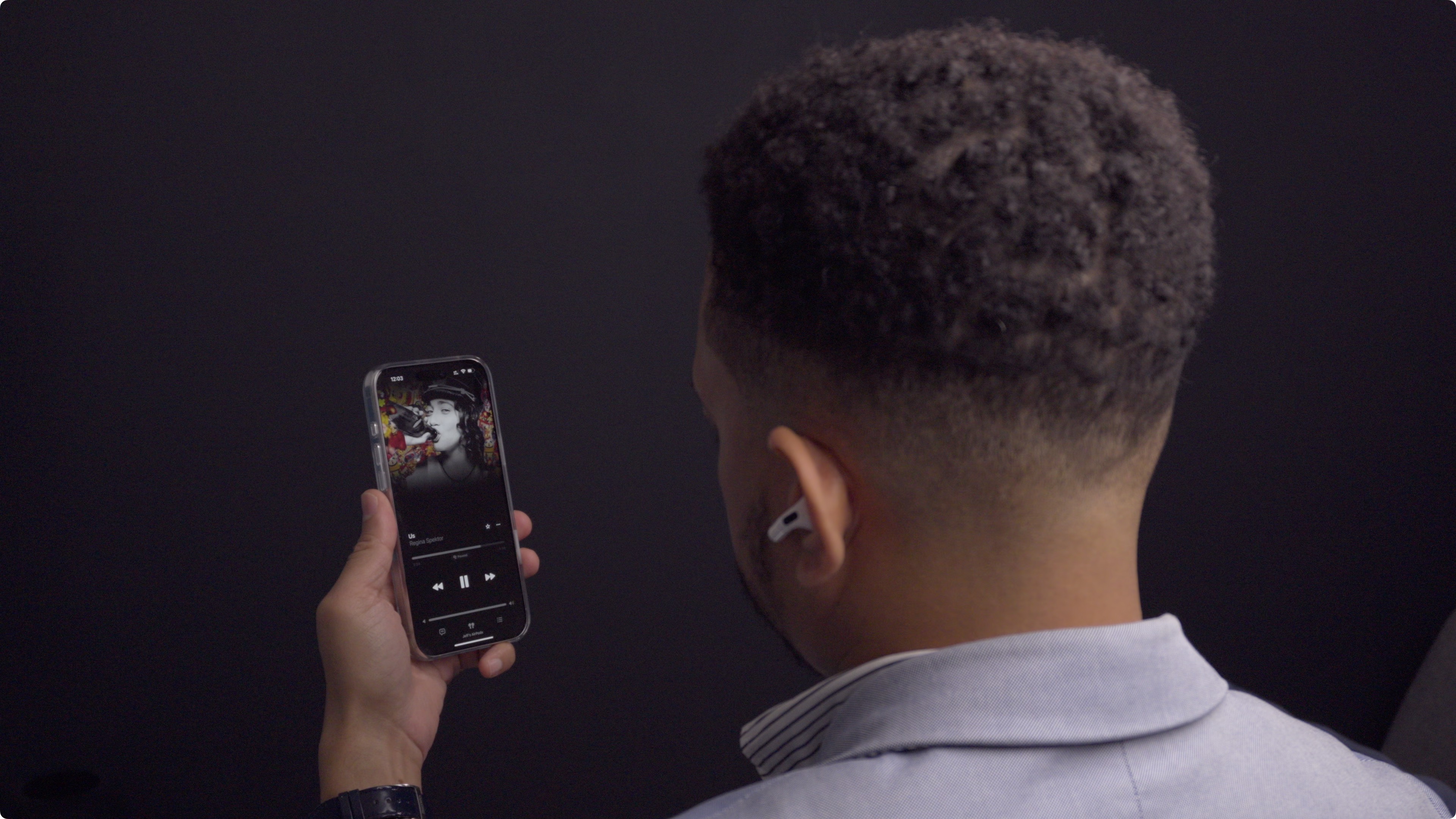
Don’t expect the deep bass made possible by in-ear tips on AirPods Pro 2, but the sound quality improvement was also noticeable with lower-end frequencies. You must ensure the buds are firmly pressed in your ears to notice the difference, but it’s there.


AirPods have been around for nearly eight years, but it shouldn’t be lost on us how impressive these things are from an audio standpoint. Garnering sound quality this good from an acoustic footprint this small is still a remarkable feat all these years later.
Microphone quality on phone calls is also a focus point with AirPods 4, with Apple introducing Voice Isolation support on AirPods directly. Previously available on iPhones, iPads, and Macs, Voice Isolation uses the H2 chip and machine learning models to help remove background noise while naturally boosting voice quality. Those on the other end of your phone conversations should notice a marked improvement in call quality when conversing in noisy areas.
FaceTime calls get some love, too, with AirPods 4. When you’re on a group FaceTime call, the addition of dynamic head tracking makes conversations feel like you’re in the same room with your friends and family.
Noise Control
Active Noise Control in an open-ear bud design is not new, but this is my first time trying it. I was skeptical about how good it could be, but after experiencing the $179 AirPods 4 with ANC, I’m convinced.
I knew ANC would work with AirPods 4; otherwise, Apple wouldn’t have shipped it. But I didn’t think it would be this good on earbuds without an acoustic seal. The noise cancellation properties of the open-ear AirPods 4 aren’t as powerful as those of the closed-ear AirPods Pro 2, which also uses the inward-facing microphone to listen inside your ear for unwanted internal sounds to cancel out, but they’re outstanding.
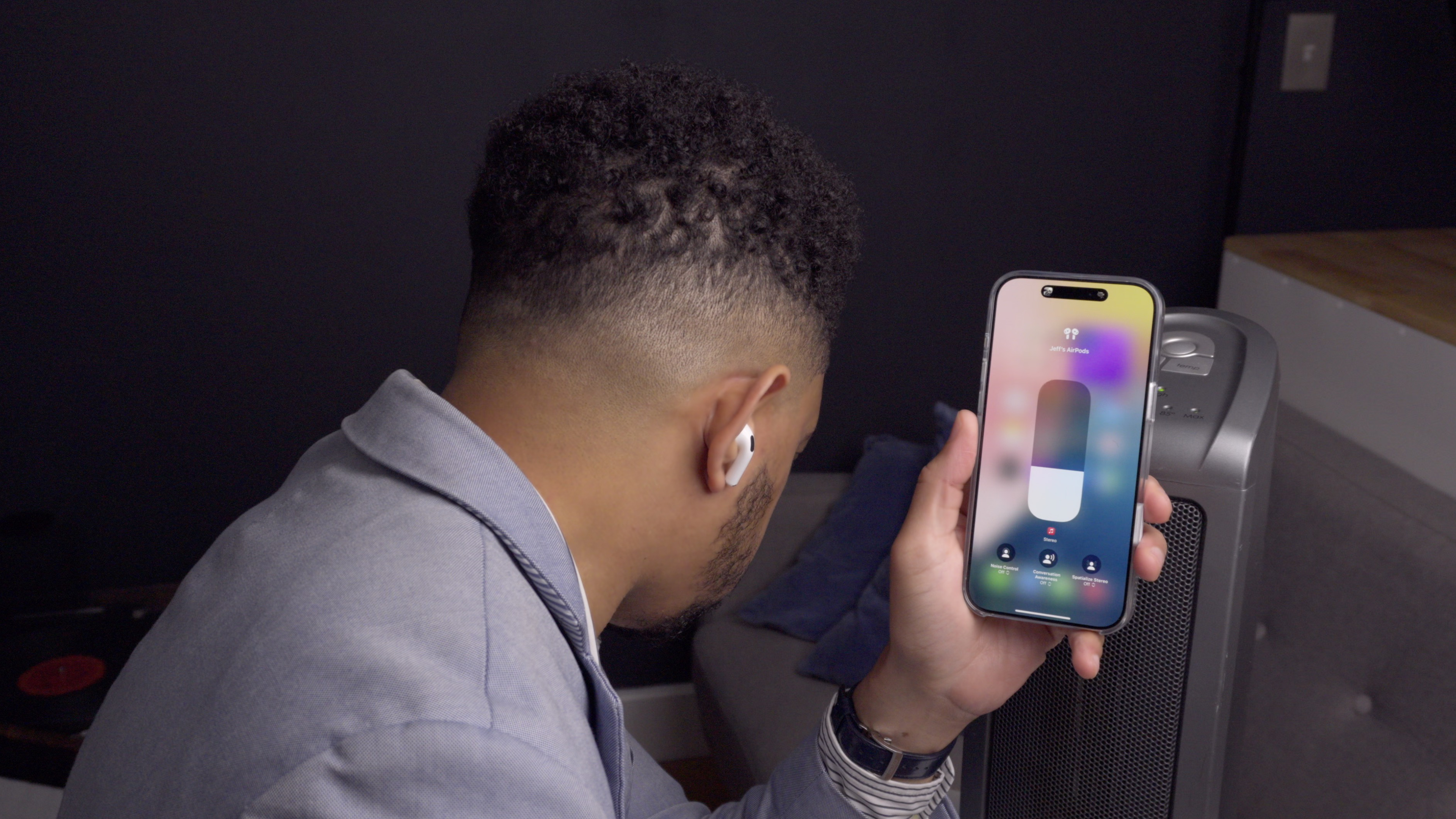
Despite being 80 degrees outside, I turned on my ceramic space heater and placed it on a table close to my ears. While not overly loud, the space heater produces a distracting drone. Upon enabling the Noise Cancellation mode, I expected the noise to lessen, but I did not expect it to get as quiet as it did. I could still hear the space heater, but it seemed further away and less distracting. If I had music playing, I probably wouldn’t be able to hear it at all. I then disabled ANC, and wow, the noise from the space heater was louder than I realized. That’s the beauty of ANC; you don’t have to blast music as loud to compensate for a noisy environment.
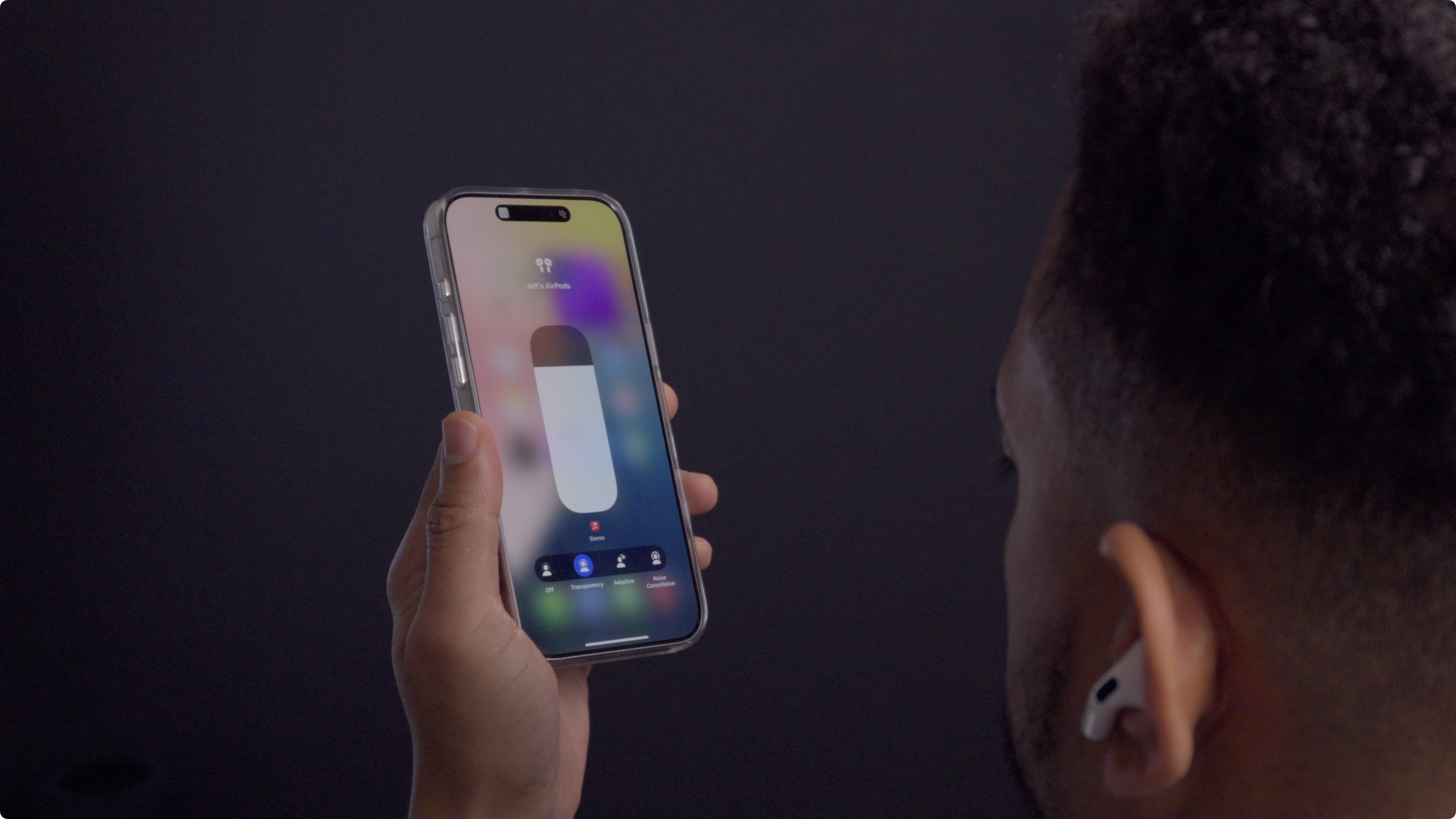
Noise Cancellation mode is only one of the Noise-Control features found in AirPods 4. There’s also Transparency mode, which lets outside sound in while lessening the intensity of loud sounds like ambulance sirens. Transparency is for those times when you need to be aware of the sounds around you, like when listening for AirPort or public transportation announcements.
Adaptive mode is like a mix of noise cancellation and transparency. It dynamically allows for external noise or cancels noise based on your environment. You can customize this feature via AirPods settings to favor less or more noise.

Personalized volume is an excellent feature that dynamically adjusts media volume based on your environment. To test, I started playing a song at 33% volume in a quiet environment. I then fired up the space heater and watched the volume automatically rise in the Control Center to accommodate the competing noise source while striving to remain at the relative volume. The inverse is true as well. Media volume will lessen if the environment you’re in gets quieter. What’s cool is that the AirPods are smart enough to know that your voice is not a source of “noise” that would cause the volume to change.


But Conversation Awareness is such a feature. When you begin talking, the media volume is automatically reduced until your conversation ends. Like some of the other features discussed, Conversation Awareness was added to AirPods Pro 2 via a firmware update corresponding with last year’s iOS 17 release. AirPods Pro 2 was released in 2022 and continues receiving meaningful updates one and two years after its debut. The AirPods 4 you own today might also improve over time via similar firmware updates.
Personalized spatial audio
AirPods 4 supports personalized spatial audio, which provides immersive 3D sound. This concept is similar to surround sound home theatre setups, but instead of physical fixtures, AirPods can virtually project sound so that it seems to be coming from different directions in 3D space.
Using the TrueDepth camera on your iPhone, setting up personalized spatial audio creates a custom profile using your head’s geometry, providing you with personally tuned acoustics. What’s cool is that you only have to do this once, as the profile syncs across your devices.

You’ll find many albums on Apple Music that feature Dolby Atmos mixes, which provide a unique listening experience compared to a stereo mix. Listen to Portugal. The Man’s “Feel It Still” in head-tracked Dolby Atmos, and you’ll immediately hear how immersive spatial audio can make the music experience. Apple also introduced Personal Spatial Audio for gaming in iOS 18, which AirPods 4 can use.
Durability
I remember killing a pair of first-generation AirPods when they got wet from sweat. Subsequent versions improved on durability, but the AirPods 4 are better than the previous three generations. AirPods 4 are also IP54-rated, meaning they protect against dust, water, and sweat. If you sweat as profusely as I do when working out, then you’ll appreciate the enhancement in this area.
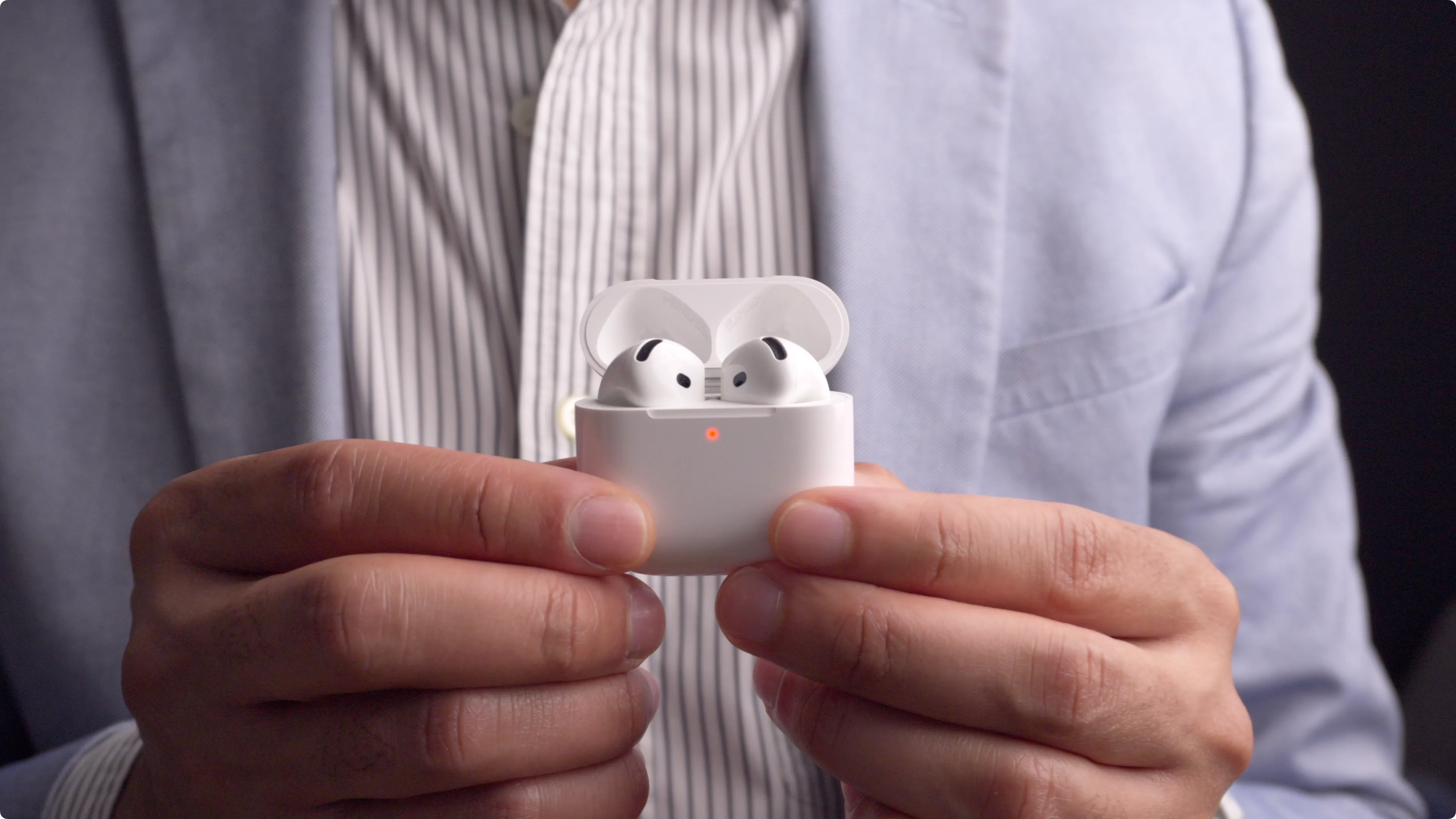
I put my AirPods Pro 2 through the ultimate test by accidentally washing and drying them. To my surprise, they still worked. That was six months ago, and my AirPods Pro 2 still work like new.
AirPods are also legendary for their overall durability. I haven’t put my AirPods 4 through much punishment yet, but I’ve dropped my AirPods Pro 2 case and earbuds probably at least a hundred times on various surfaces, including unforgiving driveway concrete. No matter how much abuse my AirPods Pro 2 are put through, they keep going. I suspect AirPods 4 will be the same.
9to5Mac’s Take
The great thing about AirPods is that not only do they just work, not only are the they best wireless earbuds for Apple devices, not only does it include innovative noise control features, but it will likely only get better over time.

Apple has upgraded the AirPods Pro 2 numerous times with new features, and we’re even getting a hearing aid feature via an update soon, although that is an AirPods Pro 2 exclusive. I’m hoping we’ll gain similar upgrades for AirPods 4 over time, and if Apple’s track record is to be considered, I think the chance of that is likely.
What are your thoughts on AirPods 4? Sound off in the comments!


![AirPods 4 review: Pound for pound Apple’s best product [Video] AirPods 4 review: Pound for pound Apple’s best product [Video]](https://i3.wp.com/9to5mac.com/wp-content/uploads/sites/6/2024/10/AirPods-4-Top-Features-and-Review.jpg?quality=82&strip=all&w=1600&w=640&resize=640,0&ssl=1)



